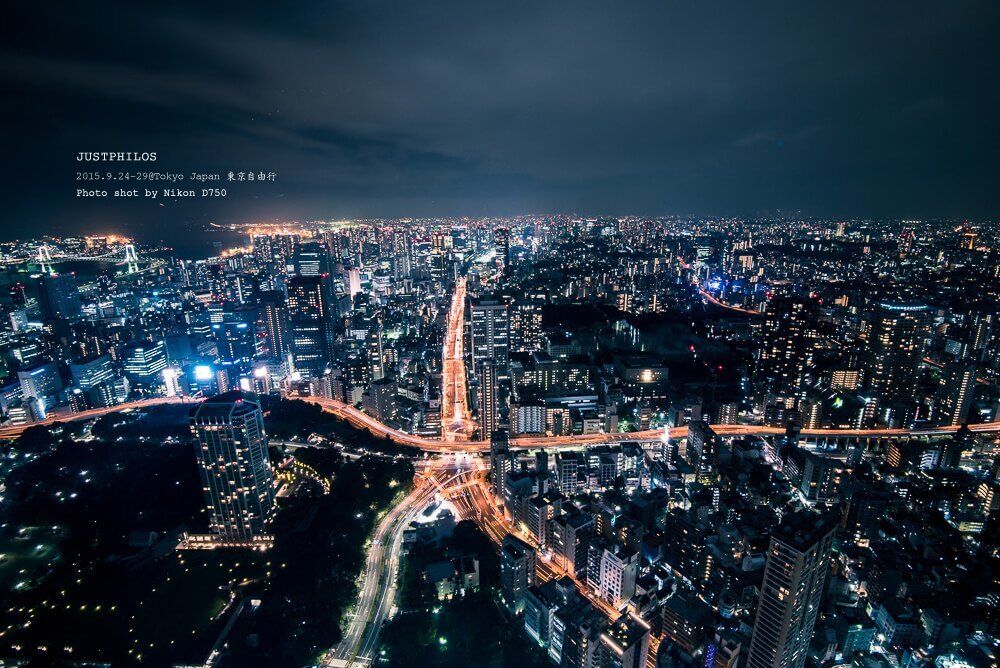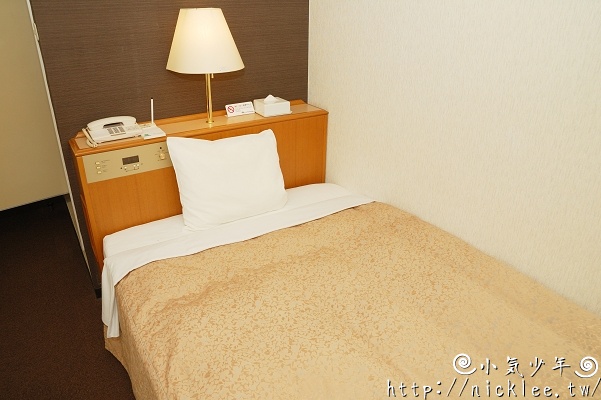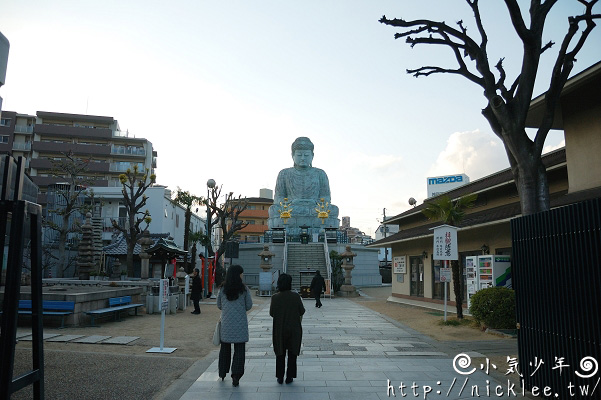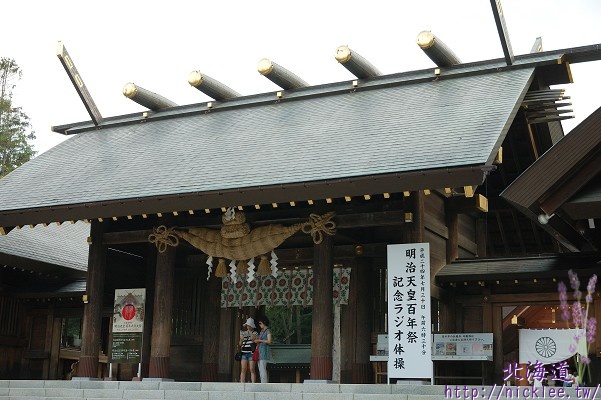Summary
In 2015, my friends and I spent almost a year planning our trip to Tokyo. Originally, we had planned for a five-day, four-night trip, but due to the disruption caused by Typhoon Dujuan in Taiwan, our trip unexpectedly became six days and five nights. Since most of us were first-time visitors to Tokyo, our itinerary was quite packed, but we managed to balance our time and transportation. If you’re looking for itinerary ideas or planning your own trip, you can refer to our itinerary and make adjustments as needed.
Our planned itinerary was for six days and five nights (although I recommend referring to the five-day itinerary since the last day was an extra day). We took an early morning flight to Tokyo and a late evening flight back, which was perfect for independent travelers or backpackers.
▋Five-day, four-night Tokyo Itinerary Overview
Day 1 | Ameyoko Shopping Street, World Trade Center Observatory, Tokyo Tower
Taoyuan International Airport (JAL JL802 10:00-14:20) → Tokyo Narita Airport → Ameyoko Shopping Street in Ueno → World Trade Center Observatory → Tokyo Tower
Day 2 | Senso-ji Temple, Akihabara, Odaiba Onsen
Asakusa → Senso-ji Temple → Ameyoko Shopping Street in Ueno → Akihabara → Odaiba (Statue of Liberty, Rainbow Bridge, Gundam, Ooedo Onsen Monogatari)
Day 3 | Meiji Shrine, Fujiko F. Fujio Museum, Roppongi Night View
Meiji Shrine → Fujiko F. Fujio Museum → Daikanyama (Tsutaya Bookstore) → Roppongi → Ginza → Yurakucho → Akebono-yu
Day 4 | Enoshima Electric Railway, Enoshima, Kamakura, Tokyo Station Night View
Asakusa → Enoshima Electric Railway → Enoshima (Enoshima Shrine, Kodama Shrine) → Along the Enoden Line (Kamakura High School Front → Gokuraku-ji Temple → Goryo Shrine → Great Buddha) → Kamakura Komachi Street → Tsurugaoka Hachimangu Shrine → Tokyo Station (Yaesu Shopping Mall, KITTE, Marunouchi Building) → Asakusa
Day 5 | Tsukiji Fish Market, Shinjuku Tokyo Metropolitan Government Building Observatory, Tokyo Skytree
Tsukiji Fish Market → Tsukiji Mosque (passing by) → Ginza (Genki Sushi) → Shinjuku Tokyo Metropolitan Government Building Observatory → Asakusa Stroll (Tokyo Skytree)
For this trip, I used a Nikon D750 DSLR camera with a Nikon 24-120mm F4G lens and a 16-35mm F4G wide-angle lens, just like my previous trip to Kyoto and Osaka. Additionally, since we had some night photography planned, I brought a tripod as well, although I only ended up using it for two days.
Taoyuan International Airport → Tokyo Narita Airport → Ameyoko Shopping Street → World Trade Center Observatory → Tokyo Tower
Since it was my second trip to Japan, I was eager to try a Japanese airline. Although we had decided to purchase our tickets a year in advance, the early morning flights from Songshan Airport to Haneda Airport were already sold out, so we chose to depart from Taoyuan Airport and take the 10:00 AM JL802 flight to Tokyo with Japan Airlines.
The flight from Taoyuan to Tokyo was operated by a Boeing 767-300ER aircraft. Although the plane was a bit old, it still had an entertainment system, although the screen was a bit outdated and there were no traditional Chinese subtitles.
▼ Onboard menu of Japan Airlines, you can order some drinks, but I decided to skip the recommended red wine due to lack of sleep.

The runway at the first terminal was under maintenance, but the plane still departed on time and closed its doors around 10:00 AM, then taxied on the runway. The actual takeoff was around 10:20 AM. Although there were some announcements about unstable air currents due to Typhoon Dujuan, the weather was surprisingly good. Perhaps because we were flying with a Japanese airline, it felt like the plane didn’t fly very high after entering Japanese airspace (?).
▼ Shortly after takeoff, you could see the airspace above Japan. This photo should be of Ishigaki Island.

▼ About 40 minutes after takeoff, you could see the Ryukyu Islands. The photo above is the airspace above Naha, Okinawa.

About an hour after takeoff, the flight attendants started serving meals. I was looking forward to the in-flight meal on Japan Airlines, but the main course was a bit greasy… The dessert had a unique texture as well. Although the overall experience was acceptable, it was still somewhat disappointing. (Later, when my friends checked, they found out that the in-flight meals on flights from Taiwan to Japan were catered by Fuxing Air Kitchen…) After a long flight of over three hours, we were getting closer to our destination. Unfortunately, we couldn’t see Mount Fuji because of the local weather conditions.
The plane landed smoothly at Tokyo Narita Airport a little after 2:00 PM. Despite it being the Mid-Autumn Festival holiday, the crowd was not as crowded as we had expected. The immigration process took about 40 minutes, which was quite fast. We had initially planned to go to our accommodation first if the immigration process took longer, but since we finished within the expected time, we decided to go directly to Ueno to buy some cosmetics. It was also conveniently on the way.
From Narita Airport to Ueno
The fastest and most convenient way to get from Narita Airport to Ueno is by taking the Keisei Skyliner. It only takes about 40 minutes to reach Ueno, making it quite fast.
Skyliner official website: http://www.keisei.co.jp/keisei/tetudou/skyliner/tc…
You can purchase tickets at the Keisei Skyliner counter. If you need a Tokyo Metro 3-Day Pass, make sure to purchase it here as well. (There are very few places in Tokyo where you can buy it.)
Based on our experience, the staff at the counter didn’t speak fluent English, so it’s a good idea to have a screenshot of the ticket type you want to purchase ready and show it to them.
▼ The platform for the Skyliner is at Entrance 1, marked with a “1” sign. It’s on the left side after passing through the ticket gate, so be careful not to miss it (we missed it…)

▼ The Skyliner train is quite new and comfortable, and the seats are assigned.

The Skyliner arrives at Keisei Ueno Station, which is about a 5-minute walk from Ueno JR Station, so it’s quite close. After arriving at Keisei Ueno, we found a luggage storage area inside and stored our large luggage. If you need to purchase a Suica card (also known as the “watermelon card”), you can go directly to JR Ueno Station to buy one.
▼ Main attractions near Ueno Station.

Ichiran Ramen & Ameyoko Shopping Street in Ueno
As soon as we left Keisei Ueno Station, our first stop was to buy fried chicken from a convenience store. My friends had been raving about the unexpectedly delicious fried chicken from Japanese convenience stores, so we couldn’t resist trying it. It was amazing to find out that a piece of fried chicken was only 170 yen. Although it was taken out of a warming box, it still had a crispy texture as if it had just been fried, and it was juicy and delicious. It made us want to have another piece. This experience also sparked our motivation to compare the taste of fried chicken from different convenience stores throughout our trip.
▼ The fried chicken from FamilyMart was juicy and delicious.

Since it was already past 5:00 PM when we arrived at Ueno Station, we decided to satisfy our craving for Ichiran Ramen, which my friends had been wanting to try for a long time. We didn’t want to deal with the crowds during peak dining hours, so we went to Ichiran Ramen first to fill our stomachs.
▼ Ichiran Ramen, a nostalgic and delicious taste.

At Ichiran, you choose your ramen type at the entrance, pay at the machine, and receive a ticket. Then, the staff will guide you to your seat, where you hand them your ticket to place your order.
Since there were seven of us, we basically took over the entire private booth. It was quite an amusing sight.
▼ If you finish the soup completely, a secret message will appear: “The last drop is where the essence lies.”

After finishing our meal at Ichiran, it started to drizzle outside, which was a bit disappointing. However, we made the most of the rainy weather and went to Ameyoko Shopping Street to buy cosmetics. We took advantage of the rain to do some shopping.
▼ Ameyoko Shopping Street in the rain, with Yodobashi on the right, which is quite tempting.

After comparing prices and testing out different stores in Ameyoko, we found that OS DRUG near the entrance was the cheapest. Although their prices were pre-tax and they didn’t offer tax refunds, it was still much cheaper overall. However, they didn’t have some products that we wanted, but I would say that they had about 80% of what we needed. If you want to save time shopping for cosmetics, I recommend considering this store.
After shopping for cosmetics, we quickly headed to the Tokyo International Trade Center Observatory before it closed at 8:00 PM. We left our luggage at our Airbnb accommodation near Asakusa and rushed out again. I can’t disclose the exact location of the Airbnb since we booked it through the platform, but if you’re interested, you can leave a comment and ask me.
World Trade Center Observatory on the 40th floor
The World Trade Center Observatory in Hamamatsucho offers a 360-degree panoramic view. To get there from Asakusa, you can take the Toei Asakusa Line and get off at “Daimon” station. From there, it’s about a 5-minute walk. You need to purchase a ticket to enter the observatory, which costs 500 yen. You can buy the ticket at the entrance, so just let the staff know that you want to go up.
Although tripods are allowed on the observatory, it’s not ideal for photography due to the marked areas where you shouldn’t touch or get too close to the glass. The reflections inside the observatory also make it difficult to take good photos. Additionally, the visibility was not very high due to the light rain, so the photos I took were not very impressive.
▼

Information for visiting the World Trade Center Observatory in Hamamatsucho:
【Transportation】JR Yamanote Line/Keihin-Tohoku Line, Tokyo Monorail Hamamatsucho Station
Toei Asakusa Line/Oedo Line, Daimon Station, Exit B3
【Admission】620 yen (we used a coupon, so it was 500 yen)
【Official Website】http://www.wtcbldg.co.jp/wtcb/facility/seaside/ind…
Tokyo Tower & Tokyo Tower Observatory
After leaving the World Trade Center, we headed to our second night photography spot, Tokyo Tower, which has a later closing time. From the World Trade Center, you can choose to walk to Tokyo Tower. We chose the route that passed by Zoshigaya Temple. Luckily, the rain had stopped by the time we left the World Trade Center, so we leisurely strolled through the streets of Tokyo, observing the post-work activities of Tokyo’s office workers (we noticed that there were quite a few people at izakayas…).
▼ A view of Tokyo Tower from a small path.

▼ Tokyo Tower up close is quite impressive.

Since Tokyo Tower has a partnership with JCB, until the end of June 2016, you can show your JCB card at the ticket counter to receive a free ticket to the Main Observatory. However, since we specifically wanted to visit the Special Observatory at night, we paid an additional 700 yen for the Special Observatory ticket, which was still quite worth it.
JCB card partnership information
The elevators at Tokyo Tower have a transparent design, so it can be a bit scary as they ascend (maybe because I had just visited the One Piece souvenir area alone and then took the elevator by myself). However, after taking the elevator a few times, I got used to it.
The Main Observatory is about 150m high and offers a view similar to the World Trade Center Observatory, so after a brief visit, we took the elevator to the Special Observatory. The Special Observatory is located at the top of the tower, so the viewing area is smaller, but the height is about 250m (about 80 floors), making it quite spectacular and captivating at night.
▼

Information for visiting Tokyo Tower:
【Hours】09:00-23:00 (last entry 30 minutes before closing) Monday
【Transportation】JR Yamanote Line, Hamamatsucho Station, North Exit
Toei Asakusa Line, Daimon Station, Exit A6, about a 10-minute walk
Toei Oedo Line, Akabanebashi Station, Akabanebashi Exit, about a 5-minute walk
Toei Mita Line, Onarimon Station, Exit 1, about a 6-minute walk
Tokyo Metro Hibiya Line, Kamiyacho Station, Exit A1, about an 8-minute walk
【Admission】Main Observatory: 900 yen
Special Observatory: 700 yen
【Official Website】http://www.tokyotower.co.jp/index.htmlhttp://www.tokyotower.co.jp/index.html
▼ Map showing the relative positions of the World Trade Center and Tokyo Tower and nearby stations

The first day of our itinerary ended with the beautiful and memorable night view of Tokyo. Since we were still tired from our recent trip to Korea, we decided not to join our friends in visiting the local public bath, Arayu, and instead ended our first day’s activities after a quick shower.





